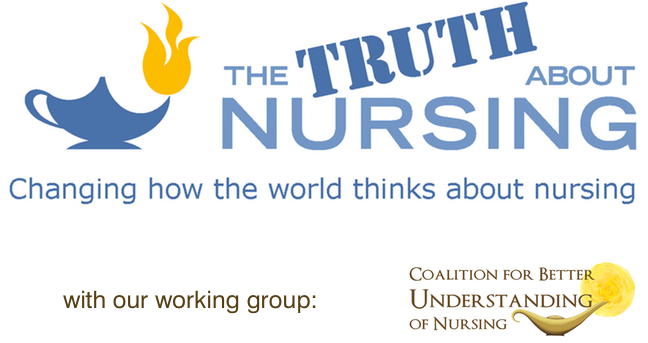San Jose Mercury News: "Nurses increasingly help solve sexual assaults"
 November 28, 2004 -- A very good piece by Sean Webby in today's San Jose Mercury News describes the growing role of skilled forensic nurses in caring for Santa Clara County sexual assault victims and gathering evidence that can help convict or exonerate suspects.
November 28, 2004 -- A very good piece by Sean Webby in today's San Jose Mercury News describes the growing role of skilled forensic nurses in caring for Santa Clara County sexual assault victims and gathering evidence that can help convict or exonerate suspects.
The piece is essentially a profile of the 15 nurses who comprise the Sexual Assault Response Team (SART) at San Jose's Valley Medical Center, which handles most adult and teen sexual assault victims in Santa Clara County. The article describes the SART team's forensic and caring missions, and has quotes from nurse Linda Richards, the team supervisor, and Laura Tracy, one of the team members. The piece also includes testimonials as to the value of the team's work from a local police officer, a prosecutor, and the director of the county's crime lab. They all point to the great improvement the SART team has brought to the quality of the forensic evidence collected compared to the former system, in which physicians and nurses with little relevant training collected evidence that was often useless. The police officer, head of the San Jose sexual assault unit, suggests that the team's importance will only grow with the increasing use of DNA evidence.
The piece also highlights successes the SART team has enjoyed. Just this month, the piece notes, "DNA evidence collected by SART nurse Kris Setterlund led police to arrest a registered sex offender less than a week after he allegedly broke into a Palo Alto home and raped a mother while her family was away." On the other hand, two years ago, "an 18-year-old Palo Alto man was exonerated after his DNA was found not to match evidence found on a 94-year-old woman who had been raped."
 Parts of the article almost seem like a conscious rebuttal of the episode of NBC's popular "Law & Order: Special Victims Unit" that was shown just five days earlier, on November 23. For instance, the television drama not only had a Manhattan police detective remain present for the care of an alleged rape victim, but also appear to essentially control the process, providing support to the victim and even taking pictures. But the Mercury News piece stresses the special care and forensic expertise of the SART teams (they take the photographs), and quotes a local prosecutor saying that "[a] cop can't do that stuff." "SVU" also showed the suspect being examined by a physician at the Medical Examiner's office, but the Mercury News reports that a growing number of those examined by the nurses are the suspects themselves. And although the "SVU" nurse character came off as an awkward and insensitive technician operating in a cold, dark environment, it's obvious from this article that the SART nurses are autonomous, highly skilled in forensics, and very sensitive to the conditions of those for whom they care. As Richards notes, the victims want "privacy" and "care." The SART facilities include inspirational paintings and long hot showers for afterwards, complete with bath products the nurses "collect" from nice hotels. And victims are brought to the SART area immediately, rather than having to wait in a crowded ED waiting room for hours "with a police officer conspicuously nearby."
Parts of the article almost seem like a conscious rebuttal of the episode of NBC's popular "Law & Order: Special Victims Unit" that was shown just five days earlier, on November 23. For instance, the television drama not only had a Manhattan police detective remain present for the care of an alleged rape victim, but also appear to essentially control the process, providing support to the victim and even taking pictures. But the Mercury News piece stresses the special care and forensic expertise of the SART teams (they take the photographs), and quotes a local prosecutor saying that "[a] cop can't do that stuff." "SVU" also showed the suspect being examined by a physician at the Medical Examiner's office, but the Mercury News reports that a growing number of those examined by the nurses are the suspects themselves. And although the "SVU" nurse character came off as an awkward and insensitive technician operating in a cold, dark environment, it's obvious from this article that the SART nurses are autonomous, highly skilled in forensics, and very sensitive to the conditions of those for whom they care. As Richards notes, the victims want "privacy" and "care." The SART facilities include inspirational paintings and long hot showers for afterwards, complete with bath products the nurses "collect" from nice hotels. And victims are brought to the SART area immediately, rather than having to wait in a crowded ED waiting room for hours "with a police officer conspicuously nearby."
Unfortunately, the readership of the Sunday Mercury News is less than a million people, whereas more than 15 million people saw the November 23 episode of "SVU." In addition, the Mercury News article might have noted the work of forensic nurses not just in gathering evidence but in presenting it to the court, a critical part of the process. And the piece might have explained that forensic nurses work not only on sexual assault cases, but other violent crimes as well.
Even so, we are pleased to see such good coverage of the SART nurses. We commend Mr. Webby and the Mercury News for their work.
See "Nurses increasingly help solve sex assaults" by Sean Webby in the November 28, 2004 San Jose Mercury News.
Send a note of thanks!















